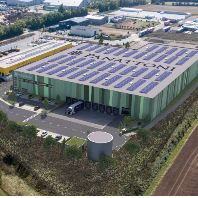Last year Lithuanias real estate market experienced the most rapid growth in the past years. According to data provided by the real estate company 'InReal', average apartment price growth in the biggest cities of the country amounted approximately to 50%, in some segments prices grew by as much as 120%. Rapidly growing interest for single-family houses saw an average price increase of around 30%, in some segments up to 70%. The biggest increase was recorded for land plots, the price of household land plots soared by 70%, land plots of commercial purpose by 75%, in some cases even 215%. Commercial premises lease prices, however, changed rather moderately during 2005.
The situation formed in the Lithuanian real estate market is for the most part explained by the following fundamental economic factors: general economic and income growth, low interest rates for loans, unpopularity of alternative investment instruments. Supply of new housing units does not meet the substantially larger demand of the society, which is becoming increasingly prosperous.
There are some other reasons contributing to the housing boom. The average dwelling area per capita in Lithuania constitutes only approximately 40% of the EU average, which was confirmed by a market research ordered by InReal at the end of 2005. According to the research data, as many as 51% of the responders are not satisfied with their current housing unit. Most of them would like to move to larger premises of newer construction if only the situation permits.
The possibility of crisis in the real estate market should not be excluded, though. The price growth, though most of all determined by the fundamental economic factors, also depends on expectations. In case of unfavourable environmental conditions such as a crisis in our country or in a neighbouring country important to Lithuania in terms of economic relations caused by the geopolitical and global economic situation, the influence of expectations may decrease and strongly affect the price level.
Lithuania, together with the other Baltic countries (Latvia and Estonia), is likely to remain the leaders of the EU regional economic growth for a long time, which in turn should also determine the activity of real estate markets in these countries.
In contrast to the housing market, the market of commercial real estate has showed a rather stable development, the price variations being negligible in recent years. As a matter of fact, the pace of building new objects has timely responded to the situation and satisfied the changed demand.
Due to the Euro introduction and related inflation expectations, the dynamics of housing price growth in 2006 remains rather indefinite and unpredictable. In normal conditions, taking into account the forecasted macroeconomic indices and the extent of new construction projects, the average housing price growth should not exceed 10-15%, that is, the growth of income/buying capacity (not applicable to unbalanced segments). In other cases, due to unjustified expectations, the price growth may increase; however, no new growth records should be achieved the price growth cycle, which lasted three years, is over. Subsequently, after collapse ofoverestimated expectations, a mild and temporary price correction is possible. In the segment of commercial real estate, a reserved gradual growth is predicted only in respect of selling prices for premises, especially those located in the central parts of large cities. Rental rates for commercial real estate should remain more or less stable provided that supply does not stick.
Source: InReal






